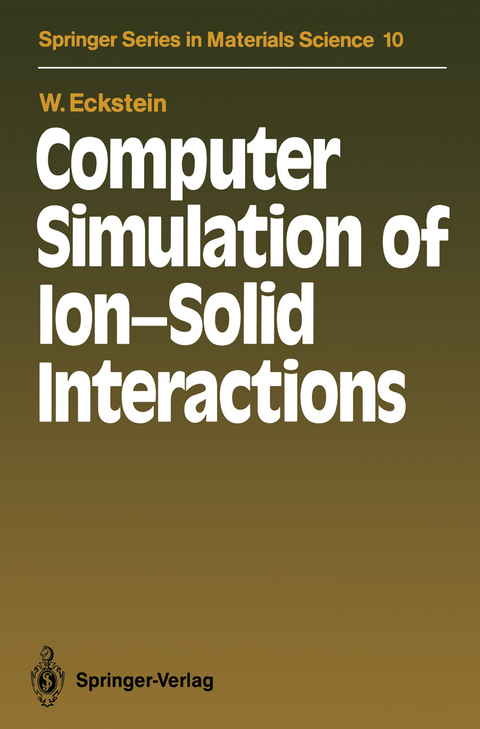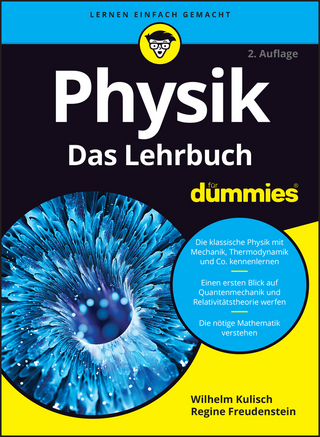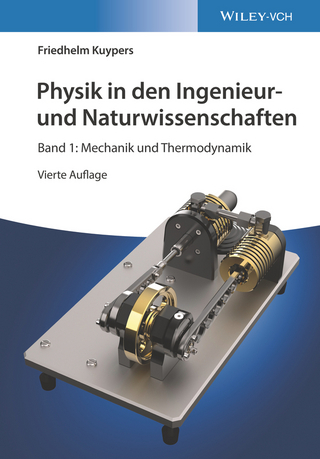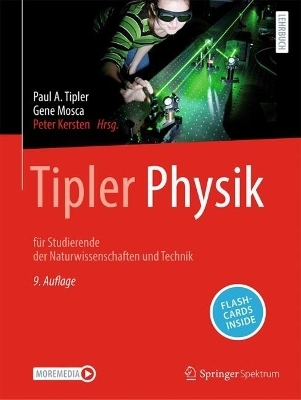
Computer Simulation of Ion-Solid Interactions
Springer Berlin (Verlag)
978-3-642-73515-8 (ISBN)
1. Introduction.- 2. The Binary Collision Model.- 2.1 Laboratory System.- 2.2 Centre-of-Mass System.- 2.3 Relations Between Laboratory and Centre-of-Mass Systems.- 2.4 Energy Transfer.- 2.5 Classical Scattering Theory.- 2.6 Asymptotic Trajectories.- 2.7 Determination of the Scattering Angle and the Time Integral.- 2.8 Limitations of the Binary Collision Approximation.- 2.9 Limitations of the Classical Mechanics Treatment.- 3. Classical Dynamics Model.- 3.1 Newton's Equations.- 3.2 Integration of Newton's Equations.- 3.3 The Time Step, Bookkeeping.- 4. Interaction Potentials.- 4.1 Screened Coulomb Potentials.- 4.2 The Born-Mayer Potential.- 4.3 Attractive Potentials.- 4.4 Combined Potentials.- 4.5 Empirical Potentials.- 4.6 Embedded Atom Method.- 4.7 Analytical Methods.- 4.8 Comparison of Potentials.- 5. Inelastic Energy Loss.- 5.1 Local Electronic Energy Loss.- 5.2 Continuous Electronic Energy Loss.- 5.3 Comparison.- 6. Thermal Vibrations and Specific Energies.- 6.1 Thermal Vibrations.- 6.2 Specific Energies.- 6.2.1 Cutoff Energy.- 7. Programs Based on the BCA Model.- 7.1 Random Target Structures.- 7.2 Monte Carlo Programs.- 7.3 Crystalline Targets.- 7.4 Lattice Programs.- 7.5 TRIM.SP and TRIDYN.- 7.6 MARLOWE.- 8. Programs Based on the Classical Dynamics Model.- 8.1 Stable, Metastable and Quasi-Stable Programs.- 8.2 Classical Dynamics Programs.- 9. Trajectories.- 10. Ranges.- 10.1 Definitions.- 10.2 Literature.- 10.3 Examples.- 11. Backscattering.- 11.1 Definitions.- 11.2 Literature.- 11.3 Examples.- 12. Sputtering.- 12.1 Definitions.- 12.2 Negative Binomial Distribution.- 12.3 Literature.- 12.4 Examples.- 13. Radiation Damage.- 13.1 Definitions.- 13.2 Component Analysis.- 13.3 Fuzzy Clustering.- 13.4 Literature.- 13.5 Examples.- Abbreviations Used in the Tables.-Constants.- References.- Author Index.
| Erscheint lt. Verlag | 22.11.2011 |
|---|---|
| Reihe/Serie | Springer Series in Materials Science |
| Zusatzinfo | XI, 296 p. |
| Verlagsort | Berlin |
| Sprache | englisch |
| Maße | 155 x 235 mm |
| Gewicht | 475 g |
| Themenwelt | Naturwissenschaften ► Physik / Astronomie ► Allgemeines / Lexika |
| Naturwissenschaften ► Physik / Astronomie ► Theoretische Physik | |
| Schlagworte | computer simulation • Computersimulation • Dynamics • Festkörper • Festkörperphysik • Implantation • ion bombardment • ion-solid interactions • Model • Potential • scattering • Simulation • Solid state physics • sputtering |
| ISBN-10 | 3-642-73515-0 / 3642735150 |
| ISBN-13 | 978-3-642-73515-8 / 9783642735158 |
| Zustand | Neuware |
| Haben Sie eine Frage zum Produkt? |
aus dem Bereich


